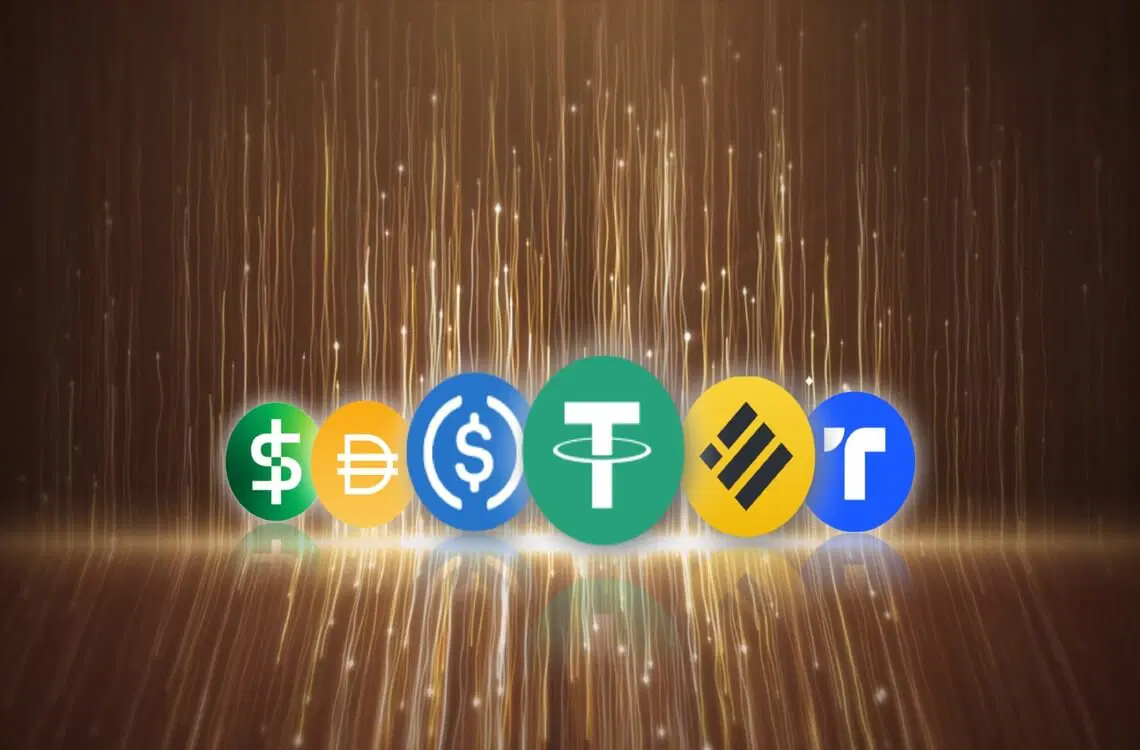Stablecoins refer to a category of digital currencies that strive to uphold a consistent value by linking it to an alternative asset, such as a fiat currency, valuable metal, or a collection of assets. Stablecoins have recently garnered considerable attention for their ability to tackle certain drawbacks associated with conventional cryptocurrencies like Bitcoin. Although Bitcoin is often associated with unpredictable price fluctuations, stablecoins offer a more consistent and reliable option, rendering them appropriate for various applications.
One of the most notable methods in which stablecoins are promoted is concerning their capacity to serve as a connection between conventional finance and the digital asset realm. By linking their worth to a consistent asset, stablecoins offer a dependable means of transaction and preservation of worth. The stability of stablecoins increases their appeal to merchants and consumers, as it allows for secure transactions without concerns about unexpected changes in value.
Stablecoins provide advantages in terms of the speed of transactions and the efficiency of costs. Conventional banking systems frequently entail extended settlement durations and excessive charges for international transactions. On the other hand, stablecoins have the potential to enable almost immediate transactions with reduced costs, which renders them a compelling choice for international trade.
In addition, stablecoins have the potential to act as a safeguard against inflation in nations that experience economic instability or have unpredictable government-issued currencies. Through the possession of stablecoins that are supported by more robust currencies, both individuals and businesses have the opportunity to safeguard their wealth against devaluation and uphold a relatively steady financial stance.
It should be acknowledged that various categories of stablecoins exist, each possessing its distinct approach to ensuring stability. Reserves of the pegged asset support certain stablecoins, whereas others depend on algorithms and smart contracts to govern the balance between supply and demand.
The Viewpoint of Mark Goodwin About Stablecoins
Mark Goodwin—Who Is He?
Mark Goodwin is the author of The Bitcoin-Dollar and an eminent supporter of decentralized financial systems. He possesses extensive knowledge and expertise in the field of Bitcoin, making him a recognized authority in this domain. With a wealth of industry experience, Goodwin has provided valuable perspectives on stablecoins and their likely ramifications for the financial ecosystem.
Arguments Against Stablecoins Made by Goodwin
The concerns raised by Goodwin regarding stablecoins revolve around issues related to centralization and the possibility of abuse or manipulation. While stablecoins aim to ensure stability, including trusted guardians and concentrated reserves brings about potential counterparty risks. Goodwin proposes that Bitcoiners approach with great caution and concern any attempts to sustain the US Treasury market through the mass purchase of Treasuries by stablecoin issuers.
Stablecoins and the Dangers That Come Along With Them
Price Stability Concerns
Although stablecoins strive to uphold a consistent value, potential risks are still involved in preserving the connection to the underlying asset. Various elements, such as prevailing market circumstances, discrepancies in liquidity, and the burden of redemption demands, can pose significant obstacles to the stability of stablecoins. If these risks are not sufficiently addressed, it may lead to deviation from the peg and potential erosion of trust from users.
Challenges in the Regulatory Landscape
The evolving nature of stablecoin regulations presents obstacles to their extensive acceptance. Stablecoins are being closely observed by regulatory bodies across the globe due to their potential impact on financial stability and safeguarding consumer interests. Stablecoin projects must navigate regulatory challenges to guarantee their long-term success effectively.
The Possibility of Market Manipulation Exists
Because of the vast market capitalization and liquidity of stablecoins, they may become prone to market manipulation. There are opportunities for people or companies to manipulate stablecoin markets for their gain, which is made possible by the rapid expansion of the digital currency arena, paired with limited oversight. These risks could be mitigated, and the market’s integrity can be guaranteed by implementing regulatory frameworks and increased transparency.
Within the world of decentralized finance, stablecoins are organizations that work toward the goal of providing the guarantee of steadiness and availability. Despite this, potential dangers and difficulties are inextricably linked to their existence and call for careful attention. Stablecoins have the potential to broaden the impact of the dollar around the globe as the industry continues to develop and legal frameworks continue to grow. Consequently, it is of the utmost importance to exercise prudence and handle the dangers associated with the consolidation of the global economy under a small number of private firms that create money.


